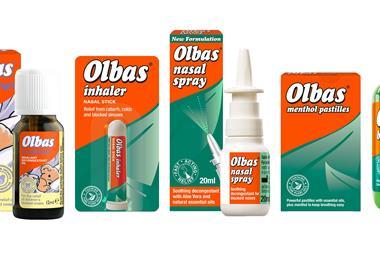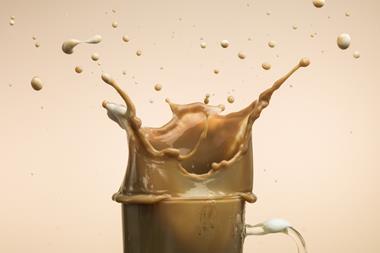Take pity on the parents of under-fives. They may be confused, sleep-deprived and eyeing up the whiskey selection behind your counter with undisguised hunger, but treat these poor souls (and their offspring) with care as they could offer a welcome boost to your bottom line.
The fact is that there are more new parents about in the UK than in the past 30 years. In the period 2011-12, more babies were born than any year since 1972, according to the Office for National Statistics.
And as that batch of kids crawls towards school age it gives their parents plenty of time to make a serious dent in your baby and toddler stock (and alcohol aisle).
Nappy days
Becky Spencer, head of P&G category management programme ShelfHelp, believes that to maximise the opportunity for distress purchases in the babycare category, it’s vital that stores have a core nappy range and strong availability.
She advises retailers to take the following information into account:
Ensure all nappy sizes are included in the range before adding additional pack sizes
Key nappy sizes are size four (the average length of time a baby is in this size is 12 months) and size five (the average length of time a baby is in this size is eight months)
Research has proven that if the size a consumer needs is not available, a size up or down is of no use and they will buy the nappies elsewhere instead, making it essential that stores are always in stock.
This group’s especially time-pressured approach to shopping means they’re likely to spend more in-store than better-rested non-parental customers. According to Kantar Worldpanel, parents spend £5.17 more per shopping trip than non-parents, a 38% boost to basket spend.
After all, parents don’t just come in and buy nappies and baby wipes - while they’re looking for something for their little ones they’ll also be thinking about ingredients for tonight’s dinner, or topping up on their household essentials.
Vic Grewal, who owns a Simply Fresh store in Thames Ditton and a Budgens in Chorleywood, says that the arrival of customers toting babies and toddlers to his stores tends to be linked to the ebb and flow of the school run, since the kids often have older siblings.
“There’s quite a big crowd of parents where we are,” says Vic. “What you tend to see is parents coming in for the school run buying snacks or something for the older children’s lunchboxes. Then they’ll come in and get something for the younger ones on the way back from dropping the older one at school.
“Some parents even come in and do all their main food shopping, alongside their kids, before the school run starts. Then it happens again about 4pm! There’s a rush of parents looking for something for their family dinner.”
As Vic’s experience illustrates, parents - with their time-intensive lives often spent juggling work and childcare - make the perfect audience for the convenience store offer. And if you manage to shave time off their daily shop, and provide them with everyday necessities such as nappies and baby formula, they’ll often become your biggest fans.
Easing their pain
Parents haven’t really understood the meaning of ‘distress purchase’ until they’ve been sent to the shop to buy something that will soothe a sniffly baby, or a toddler with a temperature. With this in mind, pain relief is a category where trusted brands with an emotional connection to the consumer often come out on top.
“The infant pain relief sector is important to convenience stores, with sales in excess of £6m annually and showing more than 2% growth,” says Andrew Freestone, commercial director of SHS Sales & Marketing UK. “Within the sector of child pain relief, Calpol delivers more than 86% of category sales within the convenience channel, accounting for more than £5m in value annually.”
As well as safe, paracetamol-based products, shoppers are also looking for effective natural remedies, including brands such as Olbas Oil.
“Formulated especially for infants over three months, Olbas for Children is a gentle decongestant that relieves stuffy noses to ease natural breathing,” explains Olbas brand manager Nikki Kerrigan. “Made with a combination of essential pure plant oils, Olbas for Children is a gentle formulation designed to help children breathe easy and support a good night’s sleep.”
With this in mind, most c-store retailers won’t need much persuading that parents, and the under-fives they bring in with them, are the kind of high-value customers they need to attract.
But how do you signpost to the wider community that your store is parent-friendly? A good place to start could be having a long, hard look at the width of your aisles.
Modern buggies can sometimes look more like tanks than pushchairs and need space for a wide turning circle if parents are to get around easily in a store. Forward-thinking store owners bear this in mind when considering store layout.
“A while back we had a look at how big our aisles were and decided to widen them so that buggies and the like could get in,” says Dennis Williams from Premier Broadway in Edinburgh.
“I think it’s turned out great, because the more space you have the more people you can fit in and the more space that they have to shop! It’s also about keeping the store tidy and removing boxes and other items off the floor so buggies and kids can get around and people don’t trip over them,” he says.
Similarly, Vic has also put this thinking into practice by making his aisles wide enough so that two buggies can easily pass each other without any fuss or backing up.
He agrees that paying attention to practical but thoughtful details such as this are a great way to attract parents, and keep them coming back.
“The overall store atmosphere also goes a long way with parents,” adds Vic. “If there’s pleasant, calming music and lots of space for the customers to move around in, then the customer’s journey through the store with kids will always be easy. And that’s what we want - to be as convenient as possible.”
Parents turning their backs on ready-to-eat baby food pouches
While in the pre-recession years ready-to-eat baby pouches were popular with time-poor and cash-rich parents, today home-made wins out over shop bought.
“Volume sales of wet and dry baby food have ebbed in recent years, largely owing to parents turning to home-made baby food instead,” says Emma Clifford, senior food analyst at Mintel.
“Almost nine in 10 parents with children aged 0-4 make their own baby food at least some of the time, while 56% buy manufactured versions.”
Clifford notes that only Ella’s Kitchen has bucked this downward trend, posting volume and value growth of 33% and 22% year-on-year respectively.
But while the popularity of pouches wanes, the ‘on-the-go’ nature of c-store shopping means that under-five snacking could be the category to invest in. “Snacking in particular is key for convenience with the UK infant finger food market worth £46m in the UK, growing 3.6%,” says a Heinz spokesperson.
“Customers can find Heinz Biscotti, Mini Rusks and Bear Biscuits in convenience stores to meet their on-the-go needs.”
To celebrate its success with baby food, Ella’s Kitchen this year expanded into the snacking market with a new organic toddler snack range.
Founder Paul Lindley says that the organic element has a big appeal for parents. “We believe that organic foods are better for babies because they guarantee certain food types are excluded, such as hydrogenated fats and all GM foods, and we agree with many families that they taste better too,” he says.
Of course, you could be the most parent-friendly c-store in your county, but it’s still vital to get the baby and toddler range right, which can be a tall order since it’s a definite ‘long-tail’ category with many product spin-offs around core items.
According to SHS Sales & Marketing, using data from IRI, nappies top category sales in convenience (making up 35% of the market), followed by milk (26%), food (18%) wipes (15%) and toiletries (6%).
What you decide to stock, as ever, depends on your local customers’ needs. So while Dennis believes that parents “shop the store” as a whole rather than coming in solely for the baby or toddler category, Vic really goes to town with it.
“In our bigger store we really do offer everything that parents would need,” he says. “So we’ve got the nappies, the cosmetics, the soaps - even chilled food for them. We get a planogram from Budgens and they really do their research.
“Everything sells and the products that don’t do so well will go in six months to be replaced by something else.”
Fresh and chilled food is an especially important part of Vic’s stock, and he believes it accounts for up to 50% of sales. He says this figure stands in the toddler/baby category, too, as customers come in to buy fresh fruit and vegetables for their toddlers and even weaning babies.
“You see a lot of parents coming in and buying things such as fresh strawberries and grapes for kids to eat on the go,” he says.
“They like to get something healthy, and that often means something fresh.”
However, it isn’t exclusively healthy options that parents are seeking out from the snack aisle to satisfy their children. Vic says he also does well with cakes and biscuits where younger kids are concerned.
Nappy days
Of all the dedicated baby products, nappies are one of the most contentious for c-stores. They’re relatively expensive, take up lots of space - and you need a variety of sizes to really make them work. Yet despite this, Vic says that they’re a must-stock at his larger store.
“We do seven different types of nappies - that’s all the main brands. We really are trying to cater to whatever people could want,” he says. “The price point has never really been an issue with our customers. That’s mainly because Budgens’ prices for nappies are pretty standard.
Opportunity for sales
Andrew Freestone, commercial director of SHS Sales and Marketing, believes changing shopping habits are working to c-store retailers’ favour when it comes to babycare products.
“Babycare hasn’t been seen as an important category for convenience retailers with the perception that shoppers will default to supermarkets and specialist retailers for their needs,” he says. But now that people are visiting their local store more frequently, the opportunity is there to cater both for distress and planned shopping missions.
“Nappies, milk and food will form the core sub-sectors,” he says. “However, baby wipes and toiletries should not be under-estimated, delivering more than £10m sales annually and showing more than 17% growth (IRI).”
“With baby and toddler stuff I also think that if it’s priced right people aren’t going to rush off anywhere else for the sake of 50p or a pound off the price.”
Baby wipes
Rather than simply being an add-on to the parental armoury, baby wipes are becoming a core component in the kiddie care category. While brand sales of nappies declined 1% in 2013 (according to Mintel), baby wipes grew 1.6% in the same period.
“Baby wipes, which display the highest product penetration at 85%, are the only segment of the market to see sales growth in 2013,” says Charlotte Libby, senior beauty analyst at Mintel.
“The own-label share of this market has historically always been high and therefore is not as affected by changes in consumer habits. Indeed, it is branded products such as Huggies, Pudgies and Adorana which have seen the strongest sales increases in the baby wipes market, driving the rise in value sales.”
Whatever you decide to stock, most retailers agree that when dealing with parents of young children it pays to be what Dennis calls “diplomatic” - especially if they’ve got a crying baby and a grumpy toddler in tow.
“I think you’ve got to be a wee bit diplomatic in these situations and that’s where you’ve got to use your own discretion and offer some good customer service,” he says. “That’s the key to this: it’s all about being civilised and treating people as you’d like to be treated yourself.
Lucky break
Dennis has found a solution to keeping the kiddies and their parents onside by creating a lucky dip box filled with cheap toys and novelties. “Every so often you can let the kids put their hands in and they get something for nothing,” he says.
“That’s great, and it’s just doing that little bit extra - plus it keeps them quiet for a bit!”
His generosity also stretches to buying into the tradition of giving a token gift to the baby’s parents. “It’s like giving the mother of a newborn baby a couple of pounds to put in their bank account, it’s just a lovely gesture but it makes a real difference.”
Dennis says that the pleasure of seeing local kids grow up as they come in with their mums and dads can be a reward in itself. And going the extra mile with customer service also means that you’ll win over more customers for the future.
Kallo add lunch rice packs
Kallo has introduced new lunch box thins snack packs featuring five two-portion rice cake packs including Kids Strawberry Yogurt and Milk Chocolate flavours. They have no artificial colours, flavours or preservatives - and even feature a hidden joke in each pack.
Pampers and Unicef team up
Shoppers have until the end of the year to help Pampers support Unicef to save babies in the developing world from dangerous diseases. For every pack shoppers buy, the UK’s number one nappy brand will donate the cost of one life-saving vaccine to the charity.
Vita Coco Kids range unveiled
Fresh from the category-changing coconut water brand Vita Coco comes Vita Coco Kids - a drink specially designed to appeal to younger shoppers. With fruit flavours and 20% less sugar than other kiddie choices, it should chime with health-conscious parents seeking hydration for their little ones.
Just Juice rebrands
Independent-only brand Just Juice aims to increase its appeal with a new look for its packaging and supermarket-competitive price points, with the 200ml range now retailing at 49p.
Retro rusks
Heinz has redesigned Farley’s Rusks to help ensure a new generation of parents get the warm ’n fuzzies around the staple baby and toddler treat. The look is designed to be retro but emphasise its health credentials by highlighting its vitamin and mineral content.
What to stock
According to Kantar, mums spend £300 on formula milk a year (based on average weekly usage over a 12-month period), so they can be valuable consumers.
“Retailers need enough range to cover the main elements. For milks, offer all three major brands - Aptamil, Cow & Gate and SMA - as mums are unlikely to switch brands,” says Sam Gillespie, category marketing executive at Danone. “As a minimum, stock powders in stages one, hungry and two, and extend to include growing-up milks (Ages 1+) and ready to feed liquid milks if possible.”
Source
Matt Chittock




























1 Readers' comment